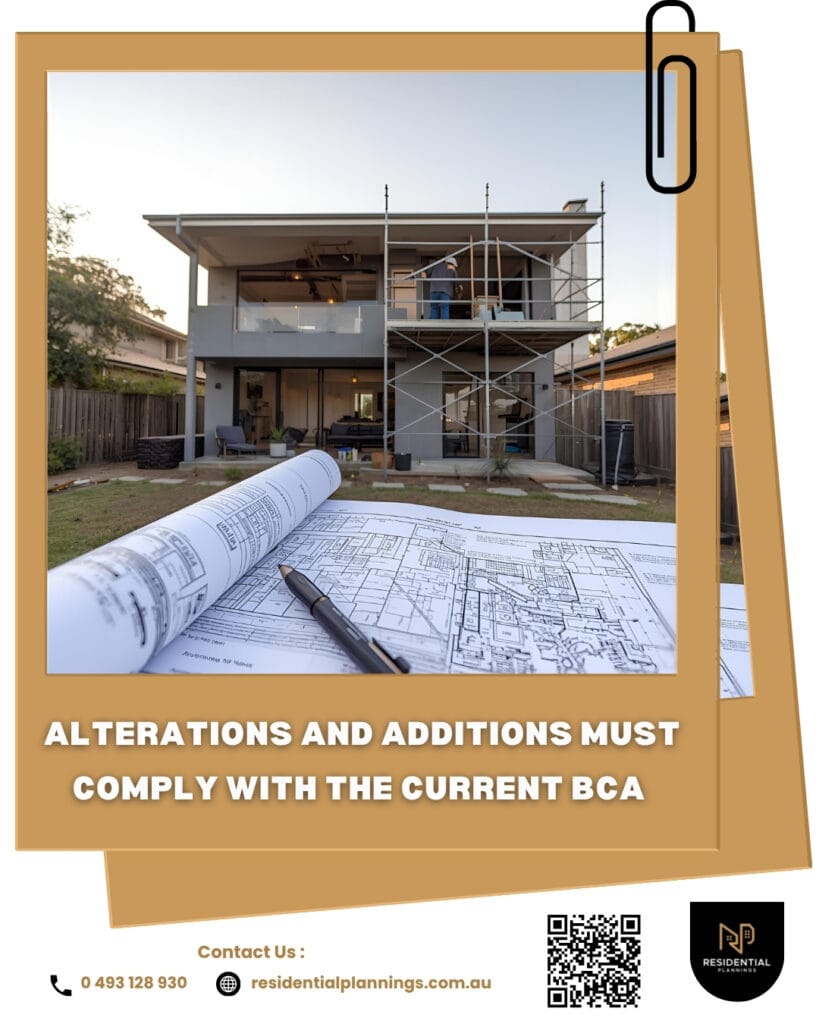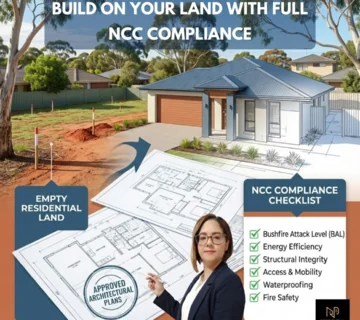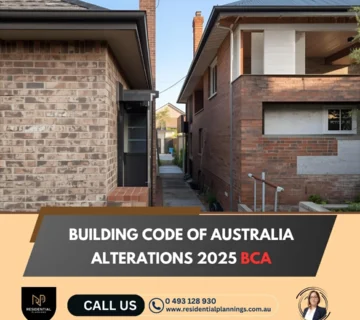Residential Alterations (BCA)
When renovating or extending an existing home, one of the most common questions homeowners and builders ask is:
“Do alterations need to comply with the current BCA, or the code that applied when the house was built?”
The answer depends on the type of work, when it was approved, and how it interacts with existing building elements.
Let’s explore how the Building Code of Australia (BCA) and National Construction Code (NCC 2025) apply to residential alterations, extensions, and upgrades.
🏠 Existing Buildings Are “Grandfathered”
If your home was lawfully built and approved under a previous version of the Building Code of Australia, it is generally considered compliant — even if the rules have since changed.
This concept is known as “grandfathering”.
What This Means:
You don’t have to bring the entire house up to the latest code when making minor changes.
Existing structures remain valid as long as they were approved under the version of the BCA in force at that time.
However, any new work added to the building must meet the current BCA or NCC 2025 requirements.
This distinction is critical when dealing with older homes, heritage properties, or dwellings built before major code reforms (such as the introduction of 7-star energy ratings).
🏗 Alterations and Additions Must Comply with the Current BCA
Whenever you submit an application for additions, renovations, or extensions, the new work must comply with the BCA in effect at the time of application.
This applies to:
Home extensions and second-storey additions
Garage conversions and secondary dwellings (granny flats)
Balcony upgrades and waterproofing improvements
Alterations that affect structure, fire safety, or energy performance
Key Compliance Areas:
Structural adequacy – Footings, beams, and frames must meet current Australian Standards.
Fire separation – New openings or additions near boundaries must maintain minimum fire distances.
Energy efficiency – New sections must achieve today’s required 7-Star NatHERS rating (or equivalent Whole-of-Home performance).
Condensation management – Updated rules require vapour-permeable membranes, drained cavities, and improved ventilation for new walls and roofs.
Waterproofing – Balconies, wet areas, and podiums must follow current BCA waterproofing standards to prevent internal moisture ingress.
Even small renovations — like replacing windows or altering a roofline — can trigger energy efficiency and structural compliance checks.
🔄 Interaction Between Old and New Work
When combining new construction with existing structures, the interface between old and new becomes the most critical compliance area.
The new work must not reduce the compliance level of the existing building.
If your extension affects fire separation, exits, or structural load paths, upgrades may be necessary to maintain overall safety.
For example:
Adding an upper floor might require strengthening existing foundations or updating fire-resistant walls between levels.
This ensures that both portions of the dwelling — old and new — form one compliant and safe structure under the current NCC.
⚡ Energy Efficiency Upgrades for Alterations
Energy efficiency is often the main trigger for applying current BCA provisions to older homes.
Under the NCC 2025:
Altered sections must meet minimum energy performance requirements, including insulation, glazing, and sealing.
Where feasible, upgrades may extend to adjoining areas (e.g. roof insulation continuity, wall sarking).
Many states — such as New South Wales — enforce additional energy standards under BASIX or local planning controls.
Whole-of-home energy assessments now account for heating, cooling, water systems, lighting, and even electric vehicle charging readiness in existing homes.
Even partial alterations may be required to align with 7-star energy efficiency standards where practical.
🌧 Condensation and Moisture Management in Alterations
The NCC 2025 condensation management framework applies whenever a wall, ceiling, or roof is modified.
Requirements include:
Installing vapour-permeable layers in external walls.
Providing drained and vented cavities behind cladding.
Ensuring subfloor ventilation and roof space airflow are not compromised during alterations.
These upgrades significantly reduce mould growth, structural damage, and indoor air-quality risks — especially in Australia’s coastal or cooler climate zones.
🔍 BCA Performance Solutions for Existing Buildings
Not every existing home can fully meet new BCA standards without major reconstruction.
That’s where BCA performance solutions come in.
A performance solution allows designers or certifiers to use alternative methods or materials that achieve equivalent safety and performance outcomes.
Examples:
Retaining an existing window size but improving glazing efficiency.
Using fire-rated coatings instead of rebuilding walls.
Upgrading insulation within existing wall cavities where full replacement is impractical.
These solutions must be supported by engineering reports, modelling, or compliance documentation, and approved by the building certifier.
🧾 Certifier Discretion and Council Considerations
Local councils and accredited certifiers have the discretion to determine how far current standards must apply to existing buildings.
Certifiers may grant partial compliance or reasonable exemptions when:
The alteration area is small or non-structural.
The site is heritage-listed or spatially constrained.
The work involves a minor refurbishment with no safety impact.
However, they must ensure that no new risk is introduced and that the overall building remains safe and serviceable.
🚗 Electric Vehicle Charging Readiness in Existing Homes
While EV charging infrastructure requirements are primarily for new builds, the NCC 2025 encourages retrofitting readiness in major alterations.
Adding dedicated electrical circuits or upgrading switchboard capacity can future-proof homes and improve property value.
Residential Plannings frequently integrates EV-ready wiring layouts into extension and renovation plans, ensuring compliance and long-term sustainability.
💡 Practical Takeaways for Homeowners and Designers
Old homes stay compliant under the rules they were built to.
New work must meet the current BCA/NCC 2025.
Energy efficiency and condensation rules often trigger broader upgrades.
Performance solutions can provide flexibility for heritage or complex sites.
Certifier discretion ensures practical, cost-effective compliance.
If you’re unsure whether your renovation requires compliance with the current BCA, speak with a qualified town planner or certifier early in the process.
At Residential Plannings, we specialise in preparing BCA-compliant design, documentation, and approvals for residential alterations and additions across NSW and Sydney’s councils.
👉 Visit Residential Plannings to ensure your next project meets today’s code while preserving your home’s character.
💬 Frequently Asked Questions (FAQ)
1️⃣ Does my alteration need to comply with the current BCA?
Yes. Any new construction, extension, or addition must meet the current Building Code of Australia, while existing areas remain under previous approvals.
2️⃣ What if my home was built decades ago?
Your existing building remains compliant (“grandfathered”), but all new work must follow current NCC standards.
3️⃣ Can I use performance solutions to avoid costly upgrades?
Yes, but only if they provide equivalent safety, health, and efficiency outcomes and are approved by a qualified certifier.
4️⃣ Are energy upgrades mandatory for small alterations?
Often, yes — especially for thermal performance, insulation, or waterproofing upgrades under NCC 2025 and state-based schemes like BASIX.
5️⃣ What role does my certifier play?
Certifiers assess whether proposed work meets the BCA and can apply discretion or approve alternative solutions where full compliance isn’t practical.





